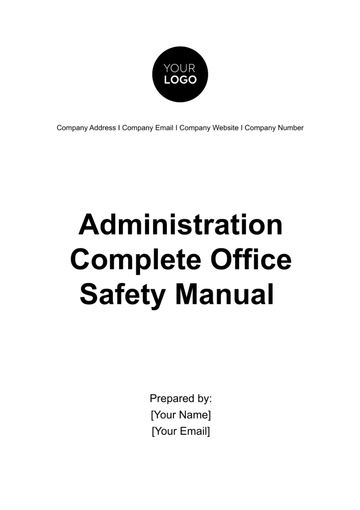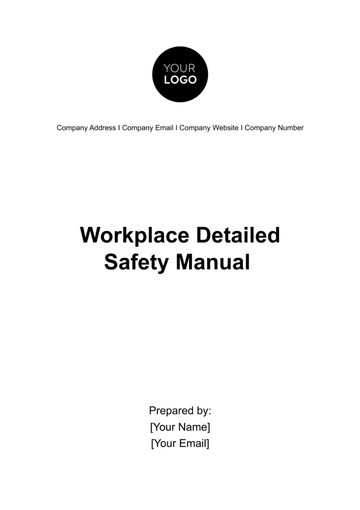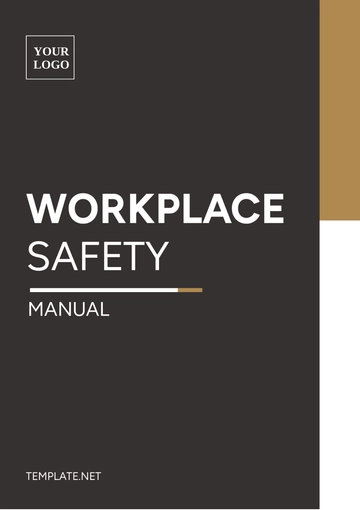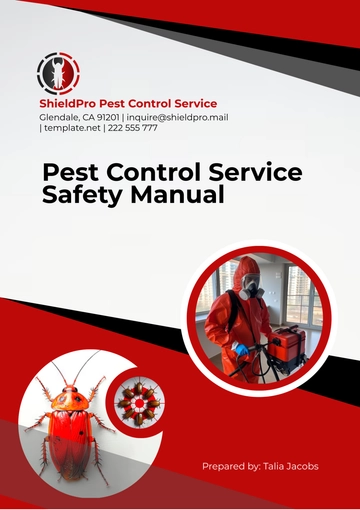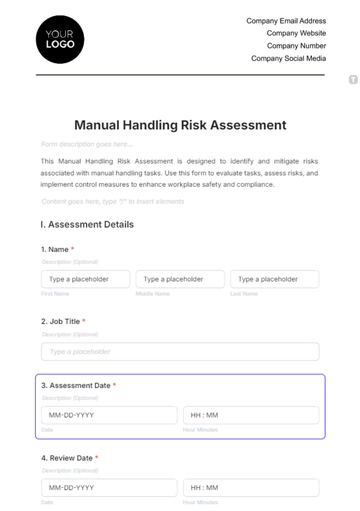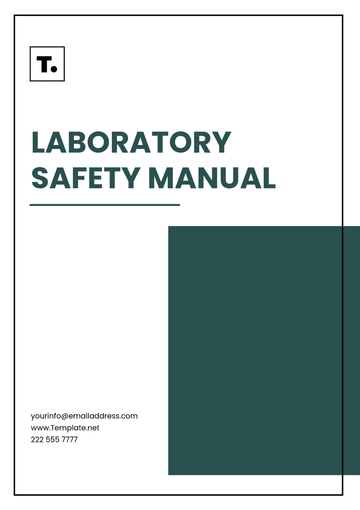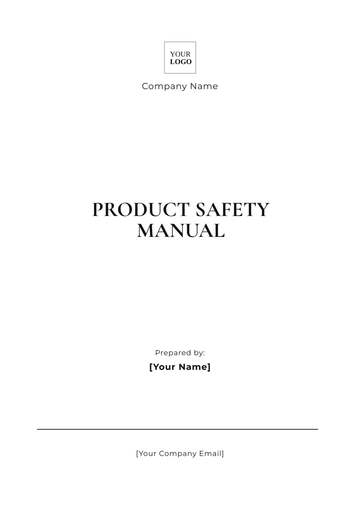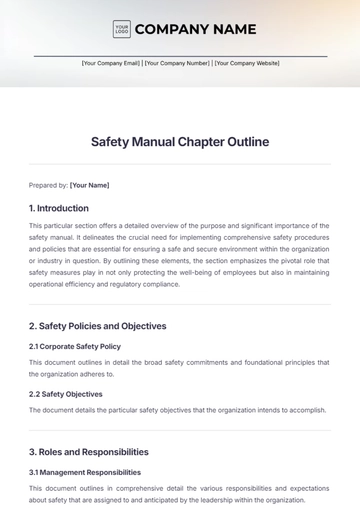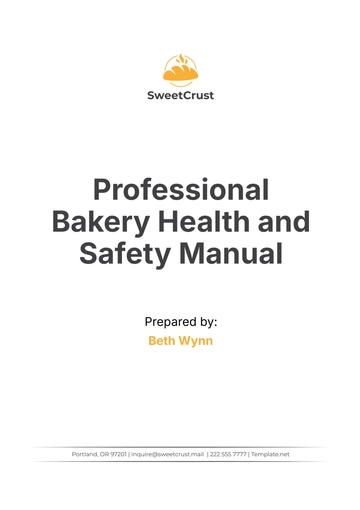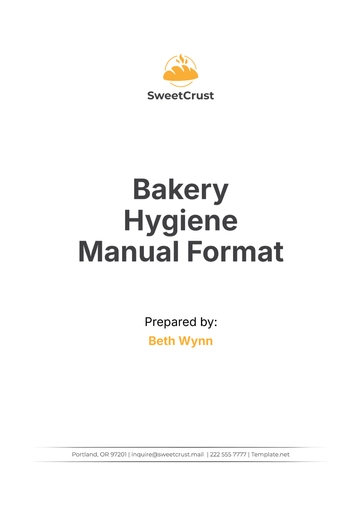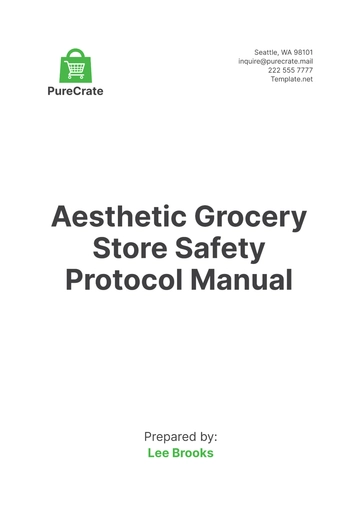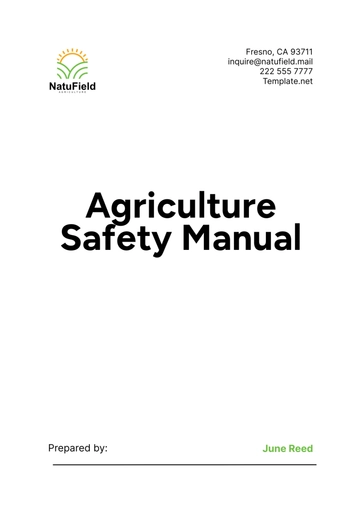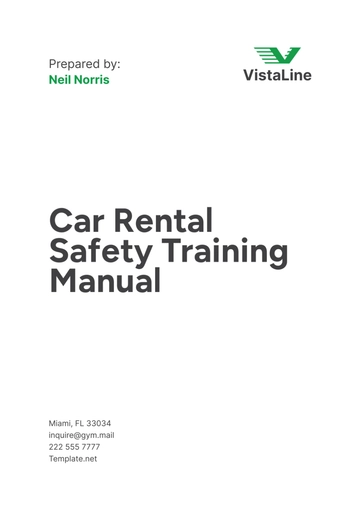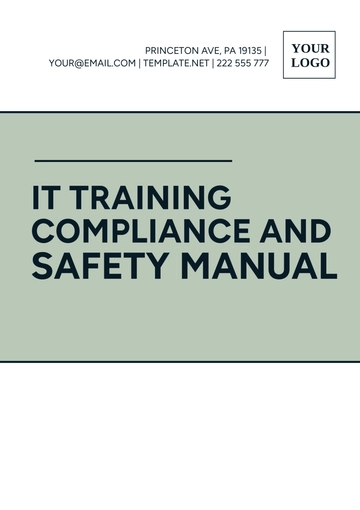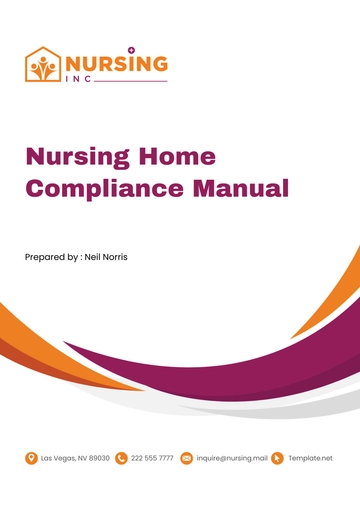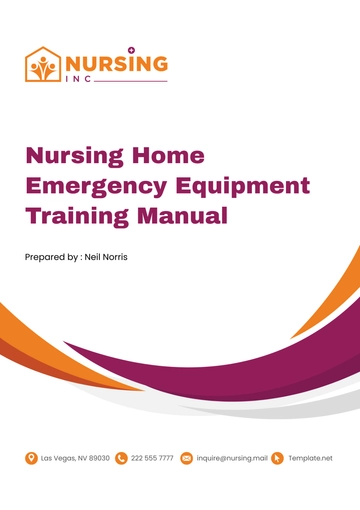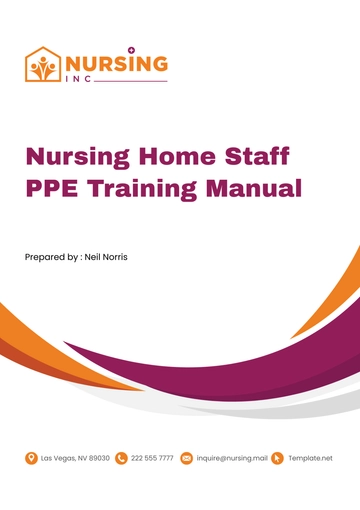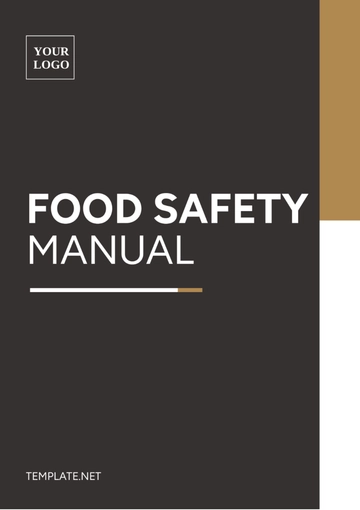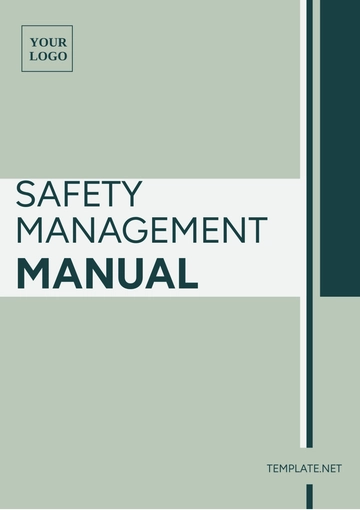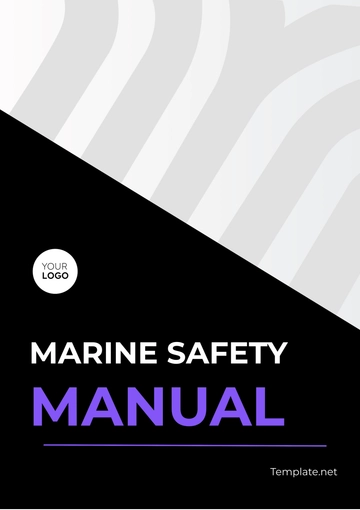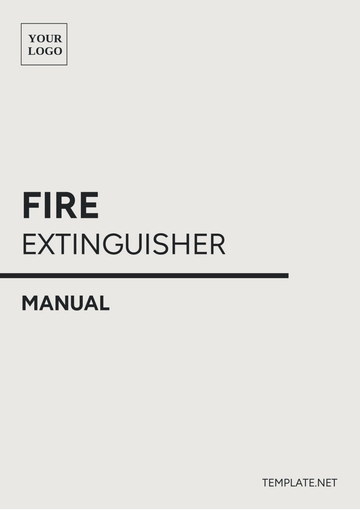Free Workplace Safety Incident Training Manual

1. Introduction
1.1. Purpose of the Manual
This manual serves as a comprehensive guide for managing and responding to workplace safety incidents at [Your Company Name]. Its primary goals are to safeguard employee well-being, ensure adherence to legal safety standards, and cultivate a proactive safety culture. The manual outlines standardized procedures for dealing with various safety scenarios, aiming to minimize risks and enhance the overall safety of the workplace. It is a pivotal tool for empowering employees with the knowledge and strategies necessary to handle safety incidents effectively, thereby maintaining a secure and health-conscious work environment.
1.2. Scope
The scope of this manual encompasses all personnel at [Your Company Name], including employees, contractors, and visitors, covering a range of settings such as company premises, offsite locations, and remote work areas. It addresses critical aspects of workplace safety like hazard identification, incident reporting, emergency responses, and safety training. The manual provides a framework for consistent and effective management of safety issues, ensuring compliance with legal requirements and fostering a culture of safety awareness and responsibility. It is designed to be a dynamic resource, adaptable to evolving safety challenges and regulatory changes, to continuously protect and support the company's workforce.
2. Understanding Workplace Safety
2.1. Definitions and Key Concepts
Workplace Safety: This encompasses all practices, policies, and procedures aimed at preventing accidents and injuries in the workplace. It involves creating a safe environment where risks are identified, managed, and mitigated.
Incident: Refers to any unplanned event that leads to injury, property damage, or has the potential to cause harm. This can include accidents, near misses, and safety breaches.
Hazard: A hazard is any source of potential damage, harm, or adverse health effects on something or someone under certain conditions at work.
Risk: The likelihood of a hazard resulting in an incident, considering the severity and frequency of potential harm.
Preventive Measures: Actions or strategies put in place to eliminate or reduce the risk of hazards leading to workplace incidents.
Emergency Response Plan (ERP): A set of procedures developed to guide employees in responding to various emergencies.
Safety Culture: The overall mindset and attitude towards safety within an organization, reflected in the behaviors and actions of all staff members.
2.2. Importance of Workplace Safety
Aspect | Explanation & Benefits |
Employee Protection | Ensures the health and safety of employees, reducing the risk of accidents and injuries. |
Legal Compliance | Adheres to occupational safety laws and regulations, avoiding legal penalties and fines. |
Productivity & Morale | A safe workplace boosts employee morale and productivity by creating a secure and comfortable working environment. |
Asset Protection | Prevents damage to company property and equipment, safeguarding financial and physical assets. |
Reputation Management | Enhances the company's public image and credibility by demonstrating a commitment to employee welfare and safety standards. |
Cost Reduction | Reduces costs associated with accidents, such as medical expenses, insurance premiums, and legal fees. |
Employee Retention | A safe work environment contributes to higher employee satisfaction and retention. |
Understanding and implementing workplace safety practices is not just about compliance; it's about creating an environment where employees feel valued and protected. By prioritizing safety, [Your Company Name] not only fulfills its legal obligations but also cultivates a culture of care and respect, essential for long-term success and sustainability.
3. Identifying Common Workplace Hazards
In this section, we delve into the identification of common workplace hazards, a fundamental aspect of maintaining a safe working environment at [Your Company Name]. Understanding these hazards is the first step in preventing workplace incidents and injuries. Hazards in the workplace can arise from various sources and can affect employees' physical and mental health. They range from immediate physical dangers in the environment to more insidious risks like ergonomic strain or psychological stress.
By categorizing these hazards into distinct types - physical, biological, chemical, ergonomic, and psychosocial - we provide a clearer understanding of the diverse nature of potential risks present in a work setting. Each category is defined by its unique characteristics and examples, aiding employees in recognizing and reporting these hazards effectively. This proactive approach to hazard identification is crucial in implementing preventive measures and ensuring the safety and well-being of all staff members at [Your Company Name].
The following table outlines the main types of workplace hazards, their descriptions, and typical examples, offering a comprehensive overview essential for fostering a culture of safety and vigilance in our workplace.
Hazard Type | Description | Examples |
Physical | Hazards due to environment or equipment | Slippery floors, noise |
Biological | Hazards from living organisms | Bacteria, viruses |
Chemical | Hazards due to chemicals | Toxic fumes, corrosive liquids |
Ergonomic | Hazards related to body positions | Poor posture, repetitive motion |
Psychosocial | Hazards affecting mental health | Stress, workplace bullying |
4. Preventative Measures and Safety Protocols
This chapter outlines the preventative measures and safety protocols at [Your Company Name]. These guidelines are pivotal in mitigating risks and enhancing the safety of all personnel. The chapter is divided into distinct sections, each addressing key areas of safety in the workplace: General Safety Guidelines, Emergency Procedures, Equipment Handling, and Personal Protective Equipment (PPE). By adhering to these protocols, employees contribute to a safer working environment, reducing the likelihood of accidents and ensuring preparedness for emergency situations.
The following table presents these measures and protocols in detail:
Section | Measure/Protocol | Detail/Sample |
General Safety Guidelines | Follow safety procedures | Adhere to all posted safety signs and guidelines. |
Use safety equipment | Utilize protective gear like safety glasses and earplugs where necessary. | |
Report unsafe conditions | Immediately inform a supervisor of hazards like spills or loose cables. | |
Emergency Procedures | Know emergency exits | Familiarize yourself with the nearest exits and escape routes in your work area. |
Follow evacuation plans | Adhere strictly to the evacuation protocol during drills and actual emergencies. | |
Locate safety equipment | Identify and know how to use first aid kits and fire extinguishers. | |
Equipment Handling | Operate authorized machinery only | Use machines only if you have received training and permission. |
Inspect equipment regularly | Conduct pre-use checks for signs of wear or damage. | |
Report equipment issues | Promptly report any faults or malfunctions to the maintenance team. | |
Personal Protective Equipment (PPE) | Use task-specific PPE | Wear appropriate PPE like gloves or helmets for specific operations. |
Ensure PPE is in good condition | Check for any damage or wear before use and replace if necessary. | |
Proper PPE storage | Store PPE in a clean, dry place to maintain its condition. |
This comprehensive approach to safety ensures that all aspects of risk prevention and emergency response are addressed, maintaining a secure workplace for all employees at [Your Company Name].
5. Incident Reporting Procedure
The Incident Reporting Procedure chapter is a critical component of the Workplace Safety Incident Training Manual at [Your Company Name]. This section provides a structured approach for reporting safety incidents and ensuring effective communication and documentation. All employees must understand and follow these procedures to facilitate quick and efficient responses to incidents, aiding in the prevention of further harm and ensuring appropriate measures are taken for each situation.
The procedures are outlined in a structured format as follows:
Step | Action | Detail |
Immediate Action | Ensure safety and provide first aid | Prioritize securing the area and administering necessary first aid to any injured parties. |
Notification | Inform the supervisor or safety officer | Promptly report the incident to a supervisor or designated safety officer for immediate action. |
Documentation | Fill out the incident report form | Complete the required documentation accurately and comprehensively. |
Further details on reporting forms and documentation:
Component | Description | Additional Information |
Availability of Reporting Forms | Access to forms | Incident report forms can be found in the HR department or on the company's intranet. |
Documentation Requirements | Details on documentation | Documentation should include a full account of the incident, noting the time, location, individuals involved, and any actions taken. |
Submission Timeline | Timeframe for submission | Completed forms should be submitted to the relevant department within 24 hours of the incident. |
Adherence to this procedure ensures a consistent and effective response to workplace incidents, helping [Your Company Name] to quickly address and resolve safety concerns while maintaining a comprehensive record for future reference and analysis.
6. Incident Response and Investigation
Effective incident response and thorough investigation are essential to understand the cause of incidents, prevent recurrence, and ensure compliance with regulatory requirements. This process not only addresses immediate safety concerns but also contributes to the continuous improvement of workplace safety practices.
Outlined below are the structured steps and procedures:
Step | Action | Detail |
Immediate Actions | Secure the area | Take necessary measures to prevent further harm, such as cordoning off the area. |
Provide medical attention | Ensure that injured parties receive immediate medical care, if needed. | |
Investigation Process | Conduct an investigation | Perform a thorough investigation to identify the cause and contributing factors of the incident. |
Involve relevant teams | Include necessary departments and personnel in the investigation for comprehensive analysis. | |
Documentation and Record Keeping | Record details of the incident | Maintain accurate and detailed records of the incident, including actions taken. |
Secure storage of records | Store all documentation and records securely for reference, analysis, and compliance purposes. |
This systematic approach enables [Your Company Name] to effectively manage incident responses, ensuring that each situation is handled with the utmost care and precision. The thorough investigation and meticulous record-keeping are pivotal in building a safer workplace by learning from each incident and applying these learnings to future safety strategies.
7. Post-Incident Actions and Follow-up
The Post-Incident Actions and Follow-up chapter is an integral part of the Workplace Safety Incident Training Manual at [Your Company Name]. This section outlines the critical steps to be taken after an incident has occurred, focusing on providing support to affected individuals, facilitating their return to work, and updating policies to prevent future incidents. It emphasizes the company's commitment to continuous improvement and employee well-being post-incident.
The procedures and actions are organized as follows:
Step | Action | Detail |
Medical Aid and Support | Provide medical and psychological support | Ensure access to necessary medical care and psychological support for affected employees. |
Document medical attention | Keep detailed records of any medical treatment or support provided. | |
Workplace Rehabilitation | Support return-to-work process | Assist affected employees in safely returning to work, considering their medical advice. |
Adjust the work environment | Make necessary modifications in the workplace to accommodate the recovery needs of employees. | |
Incident Review and Policy Update | Review and update policies | Analyze the incident to identify areas for improvement in policies and procedures. |
Implement preventive measures | Apply learnings from the incident to refine safety protocols and prevent similar occurrences. |
This structured approach ensures that [Your Company Name] not only responds effectively to incidents but also takes proactive steps toward rehabilitation and policy improvement. The focus on comprehensive support and continuous policy refinement demonstrates the company’s dedication to creating a resilient and safe working environment.
8. Training and Awareness Programs
This section emphasizes the importance of continuous education and awareness in workplace safety. It outlines the company's commitment to providing regular and comprehensive safety training, ensuring that all employees are well-equipped to recognize and respond to potential hazards. The aim is to foster a proactive safety culture where ongoing learning and vigilance are integral to everyday operations.
The structure of the training and awareness programs is detailed in the following table:
Aspect | Action | Detail |
Safety Training Sessions | Regular safety training | Conduct routine training sessions on general safety protocols and equipment handling. |
Specialized hazard training | Offer specialized training programs tailored to specific hazards pertinent to various roles. | |
Continuous Learning and Updates | Stay updated with regulations | Regularly update employees on new safety regulations and industry best practices. |
Refresher courses and drills | Implement periodic refresher courses and conduct emergency response drills to reinforce safety knowledge and readiness. |
Through these structured training and awareness initiatives, [Your Company Name] ensures that its workforce remains informed, skilled, and prepared to uphold the highest standards of safety. This commitment to ongoing education and proactive learning is crucial in minimizing risks and enhancing the overall safety culture within the organization.
9. Legal Compliance and Record Keeping
This chapter underscores the importance of adhering to legal safety standards and maintaining meticulous records. This section is dedicated to ensuring that the company not only complies with all applicable safety laws and regulations but also systematically documents safety-related activities and incidents. This approach is crucial for legal compliance, continuous improvement, and accountability.
Outlined below are the key components and actions related to legal compliance and record keeping:
Aspect | Action | Detail |
Compliance with Regulations | Adhere to safety regulations | Follow all local and national safety laws and guidelines to ensure compliance. |
Conduct safety audits | Regularly perform safety audits and checks to assess and enhance compliance status. | |
Record-Keeping Requirements | Maintain comprehensive records | Keep detailed records of all safety training sessions, safety inspections, and incidents. |
Ensure record confidentiality and access | Safeguard the confidentiality of records while ensuring they are accessible for authorized personnel and audits. |
By implementing these measures, [Your Company Name] demonstrates its commitment to maintaining a legally compliant and transparent safety environment. Effective record keeping not only serves as evidence of compliance but also as a valuable resource for analyzing trends, identifying areas for improvement, and making informed decisions to enhance workplace safety.
10. Appendices and Resources
Safety Inspection Checklists:
[Detailed checklists for regular safety inspections.]
Incident Reporting Forms:
[Standard forms for reporting workplace incidents.]
Emergency Contact Information:
[List of internal and external emergency contacts.]
Regulatory Compliance References:
[Guide to relevant safety laws and standards.]
Note: This manual is subject to regular review and updates to ensure it remains relevant and compliant with current safety standards and regulations. All employees are encouraged to familiarize themselves with its contents and contribute to a culture of safety at [Your Company Name].
- 100% Customizable, free editor
- Access 1 Million+ Templates, photo’s & graphics
- Download or share as a template
- Click and replace photos, graphics, text, backgrounds
- Resize, crop, AI write & more
- Access advanced editor
Dive into the world of workplace safety with Template.net's Workplace Safety Incident Training Manual Template. This editable and customizable resource, enhanced by our AI Editor Tool, equips you to develop comprehensive training manuals tailored to your organization's needs. Ensure safety protocols are effectively communicated and implemented with ease using Template.net's intuitive solutions.

